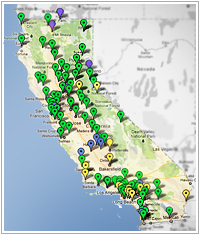Researching the Law
Courts decide legal disputes by first finding what the facts of a case are and then applying the law to those facts to reach a decision. When you present a case in court, you must do 4 things:
- Tell the court what you want.
- Tell the court the relevant facts and present evidence supporting those facts.
- Present your legal arguments with legal authorities – the laws that support the legal argument you are trying to make to win your case.
- Explain why your legal arguments and authorities require the result you want in your case.
The purpose of legal research is to find support in the law (legal authorities) for the legal arguments you are trying to make to win your case.
Types of legal "authority"
Primary authority is the set of rules or laws that are binding on the courts, government, and individuals.
There are several types of primary authority sources. The main ones are:
- The California Constitution;
- Statutes or codes passed by the Legislature;
- Regulations issued by state agencies and departments;
- Case law, based on the courts' interpretation of the meanings of codes, statutes, and regulations; and
- California Rules of Court (rules of practice and procedure for California courts).
Primary authority can be:
- Mandatory: So the court must follow it. For a trial court, an example of mandatory authority would be a prior court decision by an appeals court that normally hears appeals from that particular trial court. For California courts, a decision by the California Supreme Court is also mandatory.
OR
- Persuasive: It means that the court has the option to follow it but does not have to. For example, a California state court is not required to follow a decision of a Nevada state court, but a Nevada judge may have used a line of reasoning in deciding a case that a California judge might find helpful.
Secondary authority explains and analyzes the law. Most legal secondary authorities have many citations to primary authorities like cases, statutes, and regulations. Secondary authority does not have binding effect on the court but helps explain what the law is or should be.
There are many types of secondary authorities. Some of them include:
- Law dictionaries and encyclopedias;
- Legal textbooks like legal treatises or hornbooks;
- Law review articles, comments and notes (written by law professors, practicing lawyers, students, and others);
- Annotations published in code or statute books;
- Legal digests; and
- Legal briefs and memoranda.
California Self-Help and Family Law Facilitator Locations

Click for interactive Google map listing of Self Help Centers and Family Law Facilitator locations, or click for a printer-friendly directory.


